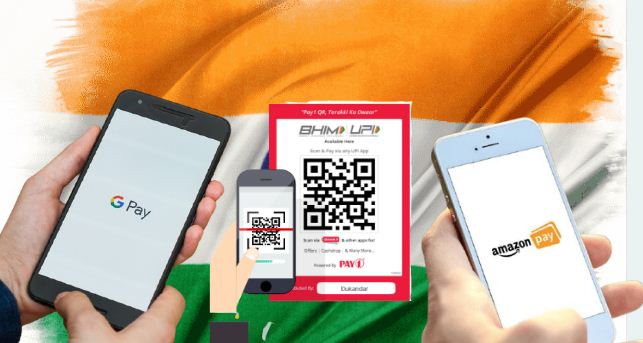Addressing the need for more home-grown, pure Indian solutions to the rapidly growing online UPI economy culture of the country, Union Minister for electronics and IT, Ashwini Vaishnaw on Sunday remarked that Indian banks should up their game by using the technological tools at their disposal.
Stating that firms have instruments such as Aadhaar, UPI, mobile, digiLocker, etc at their disposal, Ashwini Vaishnaw remarked, “You (bankers) have today a very good ecosystem of Aadhar, Digilocker, and UPI to take up the challenge. Work on the challenge for the next three months, come back and I will work the whole day with you to look at the concepts you have brought,”
Banking institutions behind the eight ball in the payments technology sector
Ashwini Vaishnaw’s sentiments were echoed by Uday Kotak, Managing Director of Kotak Mahindra Bank, who remarked that banking institutions were seemingly behind the eight ball in tapping payments technology.
In an interview with Bloomberg, Kotak remarked, “Bankers were short-sighted over the last three years. Their standard response was ‘oh, there is no money in payments.”
Kotak further asserted, “I am not against competition. All that I’m saying is we need to make sure that in the name of better competitive service, we don’t have a systemic and a stability challenge at the same time,”
Banks need to smell the coffee as earning avenues get limited
Recalling Prime Minister Narendra Modi’s assertion that the most important aspect of digital growth is consumer trust that has to be protected at all costs. Kotak argued, “So, we need to make sure that as we go for fintech and grow it, we must also be clear that we do not betray trust,”
Uday Kotak, the world’s richest banker with an estimated net worth of $16 billion also reminded the traditional banking outlets that they were competing against companies that had other avenues to earn money as well.
He said, “We have to keep in mind that consumer tech companies have revenue models outside of finance. For instance, the advertising model or the e-commerce model. Banks, by law, under Section 6 of the Banking Regulation Act cannot get into non-financial business as defined.”
One of the reasons behind the exponential growth of the fintech sector is the low penetration of banking and financial sector services in India through traditional methods. Given the low levels of urbanization and low income, more than half of India’s population was away from banking services.
Read More: Physical branches of Banks will soon be a thing of the past
UPI- a government developed product that Indian banks have not utilized
It was the National Payments Corporation of India (NPCI), a government-backed consortium of banks that, in April 2016, for the first time, introduced the revolutionary UPI (Unified Payments Interface) system. While PhonePe became the first app to integrate the system with its payment structure in August 2016, other rivals introduced it in the year to follow.
Since then, UPI has become one of the most envious products developed by the country and its government. Such is the popularity of UPI that foreign nations like Singapore and Bhutan have already adopted the online payment system.
PhonePe, Google Pay leading the charge
With 418 Cr transactions worth INR 7.68 Lakh Cr (approx $102.4 Bn) in November, UPI has continued to breach the $100 Bn value mark.
In October, PhonePe led the UPI numbers with 193 crore transactions worth Rs 3.65 Lakh crore. Google Pay maintained its second lead with 145 crore transactions worth Rs 2.87 Lakh Cr. Next in line were Paytm (632 million transactions worth Rs 80,508 crore); Amazon Pay (68.82 million transactions worth Rs 6,286 crore) and WhatsApp Pay (2.6 million transactions worth Rs 104 crore).
According to research firm Tracxn, Indian fintech received about $7.6 billion of venture capital funding this year through early November, nearly fourfold that of China. However, it wouldn’t have been possible if it wasn’t for an invention that seemingly changed the face of the entire sector.
Foreign-owned payment apps
It’s imperative to note that PhonePe is owned by Flipkart which in turn is owned by Walmart. The American Supermart giant has a 10 percent stake in PhonePe but owing to its majority stake in Flipkart, it can be ascertained that Walmart is the one pulling the strings and making the most of the profit.
As for Google Pay, the name is self-explanatory. Google is part of the sinister Silicon six and as explained by Uday Kotak, consumer trust is a big part of the financial setup, which isn’t exactly promised by a company that is infamous for harvesting users’ data indiscriminately.
Paytm, which recently got listed on the stock market, riding on inflated numbers and was crushed back to reality on the first day of listing itself makes it hard for the Indians to love it. The company is heavily funded and operated by Chinese investors and thus despite marketing itself as an Indian company, the company management sheets tell a different story.
The Banks of the country, through their years of service to the common public of India, have built a good reputation and camaraderie. However, by not developing a competitive payment system, they have missed the money-making train. The opportunity is still not lost. The sector is still evolving and Indians are not averse to hopping on new technological trends. Moreover, Indians will always trust the security of say, an SBI Bank and its UPI payments system than Google Pay or Amazon Pay.
